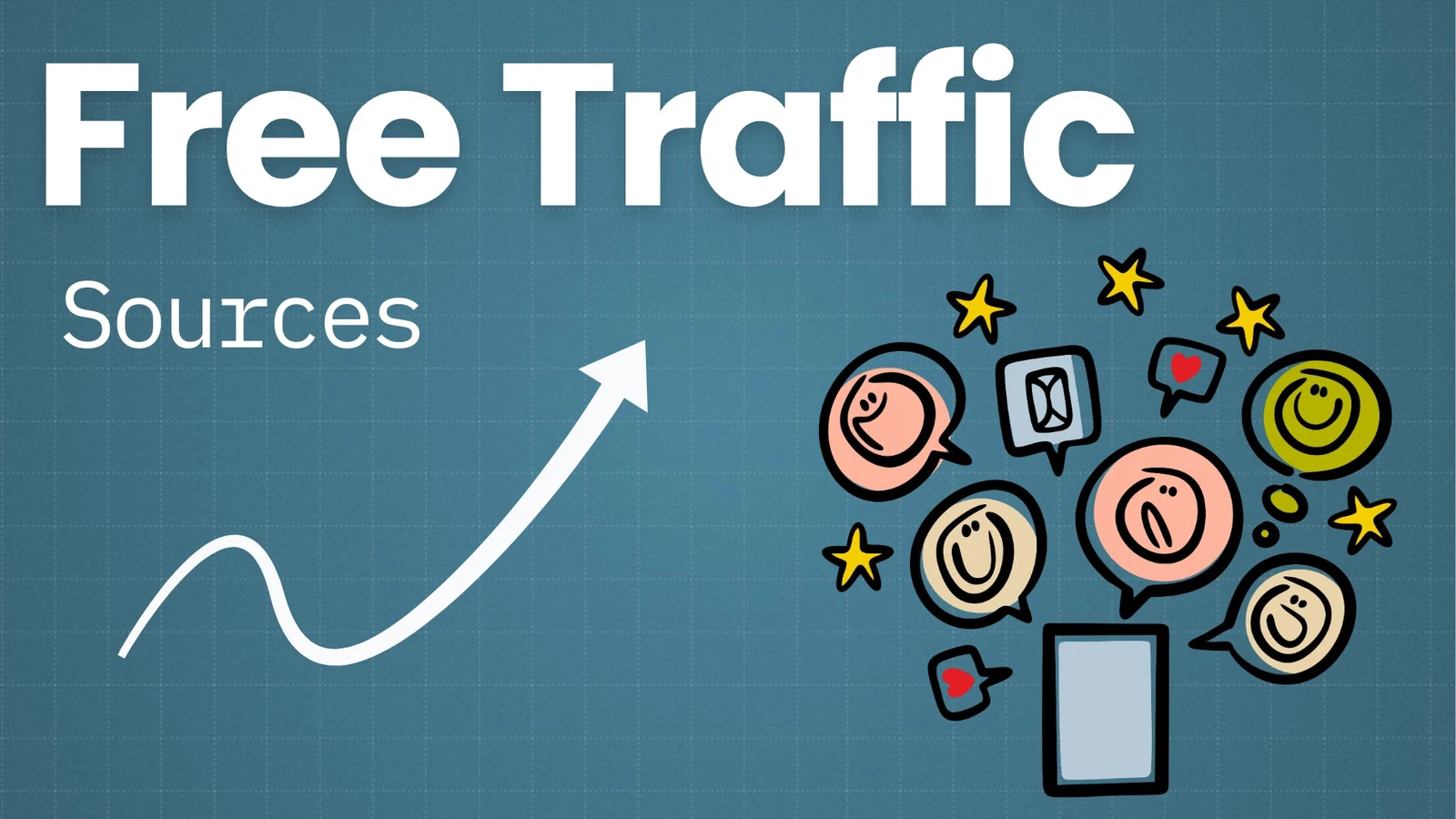
Table of Contents:
- Introduction to Organic Traffic
- Definition and Importance
- Difference Between Organic Traffic and Paid Traffic
- Benefits of Organic Traffic
- The Pillars of Organic Traffic
- Content Marketing
- Search Engine Optimization (SEO)
- Social Media Marketing
- Link Building
- User Experience (UX) and Technical SEO
- Content Marketing: The Heart of Organic Traffic
- Understanding Your Audience
- Creating Valuable Content
- Blogging for Organic Traffic
- Video Marketing and Organic Reach
- Evergreen vs. Trending Content
- Search Engine Optimization (SEO) Fundamentals
- What is SEO?
- The Role of Keywords in Organic Traffic
- On-Page SEO: Key Elements
- Off-Page SEO: Building Authority
- Technical SEO: Ensuring Search Engines Can Crawl Your Site
- Keyword Research and Targeting
- The Importance of Keywords
- Tools for Keyword Research
- Long-Tail Keywords vs. Short-Tail Keywords
- How to Integrate Keywords into Your Content
- Keyword Cannibalization and How to Avoid It
- Optimizing Your Website for Organic Traffic
- Website Structure and Internal Linking
- Mobile Optimization
- Page Speed and Performance
- User Engagement: Time on Site, Bounce Rate, and Conversion Rate
- Creating Link-Worthy Content
- Why Backlinks Matter
- The Best Link Building Strategies
- Earning High-Quality Links
- Outreach and Guest Posting
- Avoiding Link Schemes and Penalties
- Social Media and Organic Traffic
- Why Social Media Matters for Organic Growth
- Optimizing Social Media Profiles
- Leveraging Organic Reach on Major Platforms (Facebook, Twitter, LinkedIn, Instagram, TikTok)
- Building a Community and Engaging with Followers
- Social Signals and SEO Impact
- Utilizing Free Tools and Resources for Organic Traffic
- Free SEO Tools
- Analytics Tools to Track Organic Traffic
- Content Creation Tools for Optimization
- Social Media Management Tools
- Improving the User Experience (UX) for Higher Engagement
- The Role of UX in Organic Traffic
- Website Design Best Practices for Better UX
- Navigation, Accessibility, and Conversion Optimization
- A/B Testing and Improving Site Performance
- Harnessing the Power of Email Marketing
- Building an Email List Organically
- Creating Compelling Email Campaigns
- Using Email to Drive Repeat Traffic to Your Website
- Segmenting and Personalizing Emails for Increased Engagement
- Staying Ahead of the Competition
- Competitive Analysis for Organic Traffic Growth
- Monitoring Your Organic Traffic Success
- Adjusting Strategies Based on Results
- The Role of Consistency in Organic Traffic Growth
- The Future of Organic Traffic
- The Impact of AI and Machine Learning on SEO
- Voice Search Optimization
- Evolving Social Media Algorithms
- New Trends in Content Marketing and Organic Traffic Generation
- Conclusion
- The Importance of Patience in Building Organic Traffic
- Recap of the Best Strategies
- Long-Term vs. Short-Term Results in Organic Growth
1. Introduction to Organic Traffic
Definition and Importance
Organic traffic refers to visitors who arrive at your website through unpaid (organic) search results. In the world of digital marketing, organic traffic is considered a highly valuable source of traffic because it is earned, rather than paid for. It results from efforts such as search engine optimization (SEO), high-quality content, and effective social media strategies.
Difference Between Organic Traffic and Paid Traffic
- Organic Traffic: Refers to users finding your site via search engines like Google, Bing, or Yahoo through non-paid search results. Organic traffic is earned through good content and effective SEO.
- Paid Traffic: Refers to traffic that you pay for, such as through Google Ads, Facebook Ads, or other paid advertising platforms. While paid traffic can be effective for quick results, organic traffic tends to deliver better long-term ROI.
Benefits of Organic Traffic
- Cost-Effective: Unlike paid advertising, organic traffic doesn’t require a direct financial investment.
- Sustainable: Once you’ve established good organic visibility, it can continue to bring visitors to your site without additional costs.
- Credibility: Organic search results are often perceived as more trustworthy than paid ads, which can help build your brand’s authority.
2. The Pillars of Organic Traffic
There are several key strategies you should focus on to effectively drive organic traffic. These pillars are interconnected, meaning that a strong foundation in each will help support the others.
Content Marketing
Content is king when it comes to organic traffic. High-quality, informative, and engaging content is the most effective way to attract search engine users and encourage them to stay on your site.
Search Engine Optimization (SEO)
SEO is the process of optimizing your website and its content to rank higher in search engine results pages (SERPs). SEO encompasses both on-page and off-page strategies.
Social Media Marketing
Social media can be a powerful tool for driving traffic to your website. Sharing content, engaging with followers, and creating a social media community are key tactics.
Link Building
Backlinks from other authoritative websites signal to search engines that your site is trustworthy and relevant. Effective link-building strategies include outreach, guest posting, and content promotion.
User Experience (UX) and Technical SEO
A well-designed website with excellent UX and fast load times not only keeps users engaged but also helps you rank higher in search results.
3. Content Marketing: The Heart of Organic Traffic
Understanding Your Audience
The first step in content marketing is understanding who your audience is. Use tools like Google Analytics, social media insights, and surveys to gather data on your audience’s demographics, interests, and pain points. This will help you create content that resonates with them.
Creating Valuable Content
Focus on creating content that provides value. Whether it’s educational blog posts, in-depth guides, or entertaining videos, your content should aim to solve a problem or answer a question your audience has. Valuable content builds trust and encourages people to return to your website.
Blogging for Organic Traffic
Blogging is one of the best ways to attract organic traffic. Not only do blog posts help answer specific queries, but they also allow you to target a wide variety of keywords. The key is consistency. Aim to publish content regularly to keep your audience engaged.
Video Marketing and Organic Reach
Video is one of the most engaging types of content. Platforms like YouTube and social media channels provide opportunities for organic reach. If you can create high-quality, informative, and entertaining videos, you can tap into an entirely new audience.
Evergreen vs. Trending Content
- Evergreen Content: Content that remains relevant over time (e.g., “How to Start a Blog” or “Best SEO Tips”).
- Trending Content: Content that capitalizes on current events or trends (e.g., “2024 Marketing Trends”).
Both types of content are important, but evergreen content is what will continue driving traffic in the long term.
4. Search Engine Optimization (SEO) Fundamentals
SEO is the backbone of organic traffic. If you want your content to rank high in search engine results, you need to ensure that your site is optimized both technically and content-wise.
What is SEO?
SEO refers to the process of making your website more attractive to search engines like Google. By improving your website’s SEO, you can increase its visibility in search engine results pages (SERPs).
The Role of Keywords in Organic Traffic
Keyword research helps you identify the terms and phrases your target audience is searching for. Once you know these keywords, you can strategically incorporate them into your website’s content, meta tags, URLs, and more.
On-Page SEO: Key Elements
- Title Tags: The title of your page, which should include your main keyword.
- Meta Descriptions: A brief description that appears in search results and entices users to click.
- Headings: Use of H1, H2, and H3 tags to structure your content for both users and search engines.
- Internal Linking: Links to other pages within your website to help users navigate and to pass link equity between pages.
- Image Optimization: Use descriptive file names and alt text for all images.
Off-Page SEO: Building Authority
Off-page SEO refers to actions you take outside of your website to improve its search engine rankings. The most important aspect of off-page SEO is link building.
Technical SEO: Ensuring Search Engines Can Crawl Your Site
Ensure that your website is easily crawled by search engines. This includes creating an XML sitemap, optimizing page load times, and ensuring your website is mobile-friendly.
5. Keyword Research and Targeting
The Importance of Keywords
Keywords are the bridge between what people are searching for and the content you create. If you don’t target the right keywords, it will be difficult for people to find your site.
Tools for Keyword Research
There are many free and paid tools available to help with keyword research. Some of the best options include:
- Google Keyword Planner
Ubersuggest
- Answer the Public
- Ahrefs (Paid)
- SEMrush (Paid)
Long-Tail Keywords vs. Short-Tail Keywords
- Short-Tail Keywords: General and broad keywords (e.g., “digital marketing”).
- Long-Tail Keywords: More specific, longer phrases (e.g., “best digital marketing strategies for small businesses”).
Long-tail keywords tend to have lower competition and can result in higher conversion rates, though they may have less search volume.
How to Integrate Keywords into Your Content
Keyword integration should feel natural. Overstuffing content with keywords can harm your SEO rankings. Aim to use keywords in the title, headings, first 100 words, and naturally throughout the content.
Keyword Cannibalization and How to Avoid It
Keyword cannibalization occurs when multiple pages on your site target the same keyword. This can confuse search engines and hurt your rankings. To avoid this, make sure each page targets a unique set of keywords.
6. Optimizing Your Website for Organic Traffic
The technical aspects of your website can have a big impact on your ability to rank well in search engines. Ensuring your website is well-optimized will help both search engines and users have a positive experience.
Website Structure and Internal Linking
A clear and logical website structure makes it easier for both users and search engines to navigate your site. Internal linking helps search engines understand the hierarchy and relevance of your pages.
Conclusion
Building free organic traffic to your website is a process that requires patience, consistency, and strategy. By focusing on high-quality content, effective SEO, social media engagement, and improving user experience, you can significantly increase the organic traffic to your site without relying on paid ads.
This is just a starting point, but with each of these strategies in place, you’ll be well on your way to driving sustainable organic traffic to your website for the long haul.


Leave a Reply